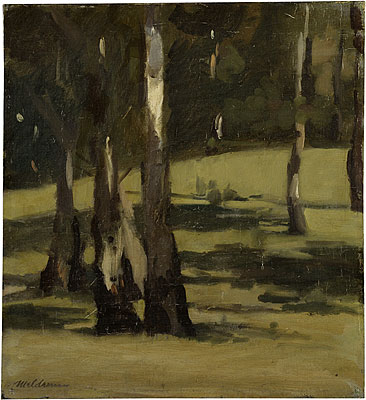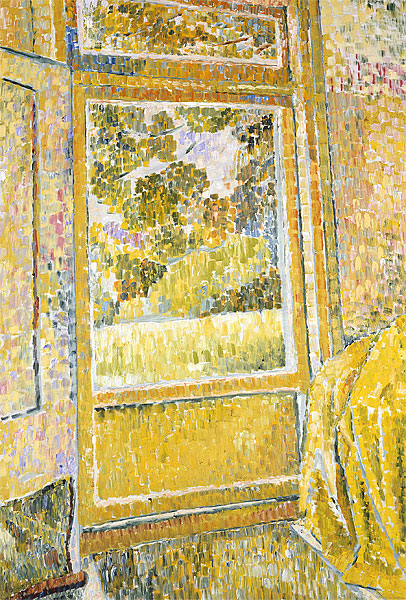The Heide’s collection, especially some of the earliest works that were on show in Heide I, got me really excited. I wanted to find out more about the artists whose work was featured, including Sam Atyeo (whose cubist painting, Cigarette (1936) was my favourite of the collection), and I wanted to paint or draw.
On the first aspect of my art-inspired mission (research), I went to the local library to borrow a book or two on Australian painting. I borrowed an enormous book on Australian modern painting and lugged it home in the near 40˚C heat with a pile of other books that people had recommended (Jonathan Franzen’s Freedom and the classic Moby Dick) or that started to address gaping holes in my education (philosophy).
The book Australian Modern Painting: Between the Wars 1914-1939, provided a great introduction into the main players (artists, collectors, educators), movements and events affecting art during the period. Here are the artists that stood out to me:
- Max Meldrum (especially his oils of eucalyptus, like Landscape with trees c. 1925)

- Grace Cossington Smith (especially her painting Studio Door 1966)

- Roland Wakelin (especially his Sewing Machine 1928)
- Magaret Preston (especially Implement Blue 1927)

There were also a few large, full colour copies of Sam Atyeo’s work. Atyeo painted what is regarded to be the first Australian abstract canvas, Organised Line to Yellow (1934). He also trained as a designer, and seemingly haphazardly became a diplomat.
Doctor Herbert Vere Evatt, Attorney-General and Minister for External Affairs in John Curtin’s Government, personally recruited Atyeo into his service in the early 1940s. Just a quick sidenote, Dr H V Evatt (better known as “Bert” or “Doc” Evatt) was also a pretty interesting character in Australian political and cultural affairs. He was a jurist, politician and writer. He was President of the United Nations General Assembly in 1948–49 and helped draft the United Nations Universal Declaration of Human Rights (1948). He was Leader of the Australian Labor Party while in Opposition from 1951 to 1960. Two years later, Evatt suffered a mental breakdown and was retired from the bench.
But back to Atyeo…
Daniel Mandel says of Atyeo‘s diplomatic experience:
“During a temporary appointment that was to last for about eight years, he enjoyed unhindered access to Evatt; this intimacy and Evatt’s use of him to inform on officers in the Department of External Affairs caused many career diplomats to be suspicious and jealous of him…
Atyeo earned a reputation for gregarious bluntness and intemperate speech; (Sir) Winston Churchill is reported to have described him as the most foul-mouthed diplomat in the world…
In later life he disparaged his diplomatic career as mere `international politicking’.”
In a letter the artist wrote to his political patron while in Greece, his casual manner towards the whole diplomatic experience is evident:
“21 Atyeo to Evatt
Letter SALONIKA, 12 March 1947
….
The Greek Govt is very far to right & I’m sure no solution is possible until it becomes a whole lot more democratic. The presence of the commission has been valuable in this direction.
The cessation of executions did a hell of a lot of good. It was a young American & myself who went to see the Greek liaison officer at 3.30 a.m. & pleaded with him to stop the executions (which were to take place at 5 a.m.) until at least the commission could sit & give a decision. The order was given at 4.30 a.m. Quite close. The long telegram Hood sent is a fair account.
All the best my boy & look after yourself. Love to both.
SAM
I reckon I’m becoming quite a delegate now with all my experience.”
But back to the Art.
As Daniel Mandel says:
“The importance of Atyeo to the modernist movement in Australian painting and design is often neglected.”
But at the Heide, they feature some of his works, including Cigarette (1934), Abstract figure with thumb (c.1934) and The Dancer (1936).





















